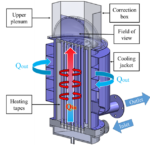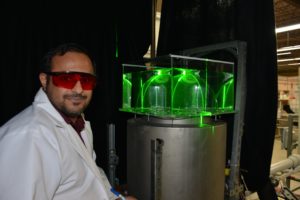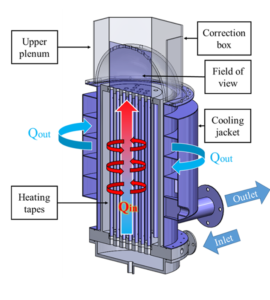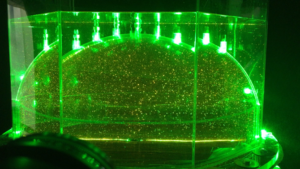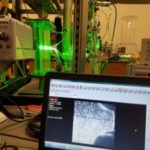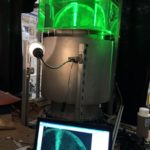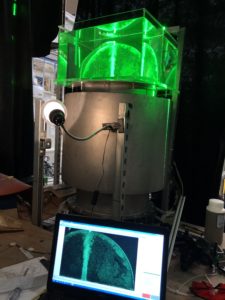Details
The Versatile Test Reactor (VTR) program under the U.S. Department of Energy (DOE) aims to design an irradiation facility to provide a broad range of testing capabilities for nuclear fuels and materials. The VTR facility is preliminarily proposed as a sodium-cooled 300 MW fast spectrum test reactor to aid in the efforts of research and develop advanced fuels, components, and
instrumentation. The proposed reactor will have five potential locations for instrumented assemblies and/or cartridge loops (CL). These CL will have the ability to be cooled using Sodium, Lead, Molten Salt, or Helium
Texas A&M University is participating in the project to develop instrumentation and tools to use in a proposed high-pressure/high-temperature gas-cooled closed-loop test vehicle. The goal of the research project is to provide measurement techniques and numerical tools to quantify the transport and deposition of fission products in test vehicles and auxiliary components. In the first year of the multi-year project, proposed measurement techniques were performed in a proof-of-concept horizontal test facility. Numerical models are compared to experimental results as validation. Subsequent years of the project will include the implementation of measurement techniques in a scaled model of the proposed VTR high-pressure/high-temperature gas cooled closed-loop test vehicle.
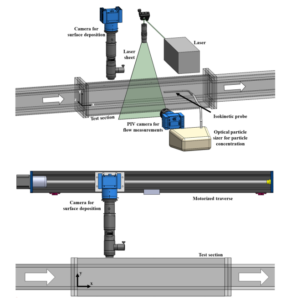
The scopes of the proposed project have following tasks:
- Phenomena Identification and Ranking Table (PIRT): A PIRT will be developed for the VTR GFR experimental facility to identify and rank the important phenomena involved in the generation, transport, deposition, and resuspension of fission products in the VTR GFR Cartridge Loop
- Scaling: It is expected that the scaling approach developed in this study can be applied to investigate the FPVS of the VTR GFR Cartridge Loop.
- Development and Application of Measurement Techniques: The goal is to develop and apply techniques to measure solid fission product concentrations. This will be achieved by combining a source of illumination (laser) and high speed and resolution cameras
Related Publication
- R. Chavez, D. Orea, B. Choi, T. D. Nguyen, N. K. Anand, Y. Hassan & P. Sabharwall (2020): An experimental study of solid and liquid aerosol transport in a horizontal square channel, Aerosol Science and Technology, DOI: 10.1080/02786826.2020.1786002
- Sabharwall, Piyush, Orea, Daniel, Choi, Byung-Hee, Nguyen, Thien, Vaghetto, Rodolfo, Hassan, Yassin A., and Anand, N. K. Fri , Development of Innovative Measurement Techniques for Fission Product Transport Quantification, USDOE Office of Nuclear Energy (NE), DOI:10.2172/1631739
Conference
- B.H. Choi, D. Orea, D.T. Nguyen, N.K. Anand, Y. Hassan, P. Sabharwall, Numerical Study of Particle Transport and Deposition in a Horizontal Channel Using a Lagrangian-based Modelling Approach, International Mechanical Engineering Congress & Exposition (IMECE 2019), November 8th-14th, Salt Lake City, Utah, 2019.
- Orea, B.H. Choi, D.T. Nguyen, R. Vaghetto, N.K. Anand, Y.A. Hassan, P. Sabharwall, Experimental Study of Surrogate Particle Transport and Deposition In a Square Channel Using Particle Tracking Technique, International Mechanical Engineering Congress & Exposition (IMECE 2019), November 8th-14th, Salt Lake City, Utah, 2019.
- Orea, B.H. Choi, D.T. Nguyen, R. Vaghetto, N.K. Anand, Y.A. Hassan, P. Sabharwall, An Investigation to Develop Measurement Techniques for Quantifying Fission Product Transport in a Gas-cooled Fast Reactor-Versatile Test Reactor Program, Transactions of American Nuclear Society 120 (1), pp. 1015-1018.
- B.H. Choi, D. Orea, D.T. Nguyen, N.K. Anand, Y. Hassan, P. Sabharwall, Numerical Investigation of Fluid Flow in a Square Channel-Versatile Test Reactor Program, Transactions of American Nuclear Society 121 (1), pp. 1149-1152.
- Orea, R. Chavez, D.T. Nguyen, R. Vaghetto, N.K. Anand, Y.A. Hassan, P. Sabharwall, Experimental Investigation of Surrogate Particle Transport in a Turbulent Channel Flow: Versatile Test Reactor Program, Transactions of American Nuclear Society 121 (1), pp. 1153-1156
- An Investigation to Develop Measurement Techniques for Quantifying Fission Product in a GasCooled Fast Reactor – Versatile Reactor Program, D. Orea, B. H. Choi, D. T. Nguyen, R. Vaghetto, N. K. Anand, Y. A. Hassan, and Piyush Sabharwall, Transactions of American Nuclear Society, Vol. 120, pp. 1015-1018, Minneapolis, Minnesota, June 9-13, 2019.

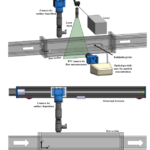
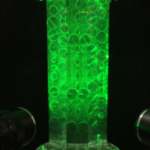
 Texas A&M is conducting pressure drop and velocity measurements in the versatile experimental facility of randomly packed spheres at various Reynolds numbers. High-fidelity velocity measurements using Time-resolved Stereoscopic Particle Image Velocimetry (TR-SPIV) at the pore scales and near the wall boundary are performed in the matching-refractive-index (MRI) facility.
Texas A&M is conducting pressure drop and velocity measurements in the versatile experimental facility of randomly packed spheres at various Reynolds numbers. High-fidelity velocity measurements using Time-resolved Stereoscopic Particle Image Velocimetry (TR-SPIV) at the pore scales and near the wall boundary are performed in the matching-refractive-index (MRI) facility.